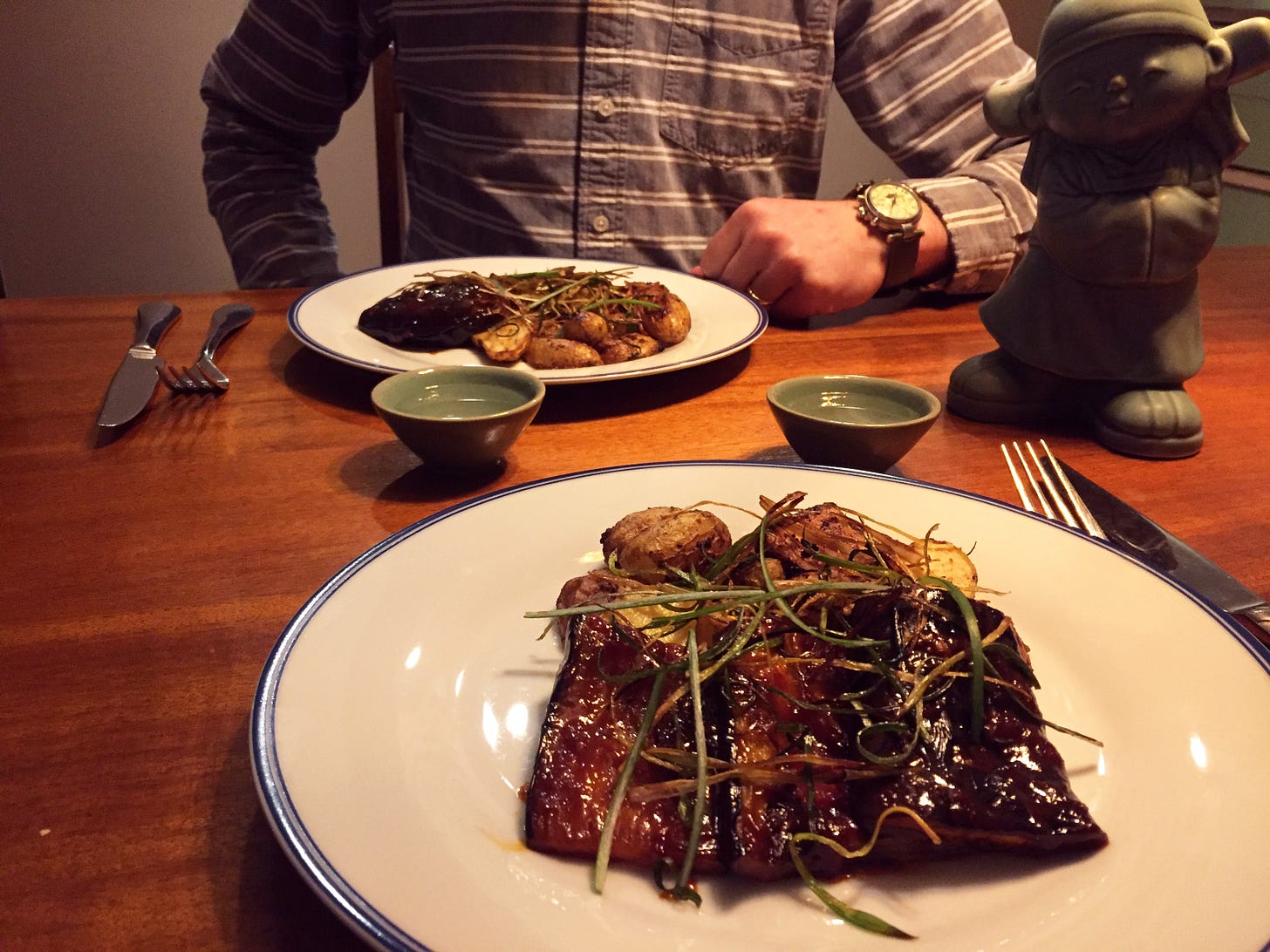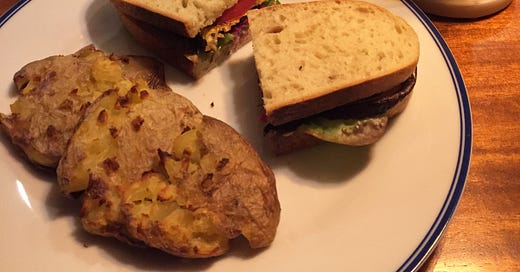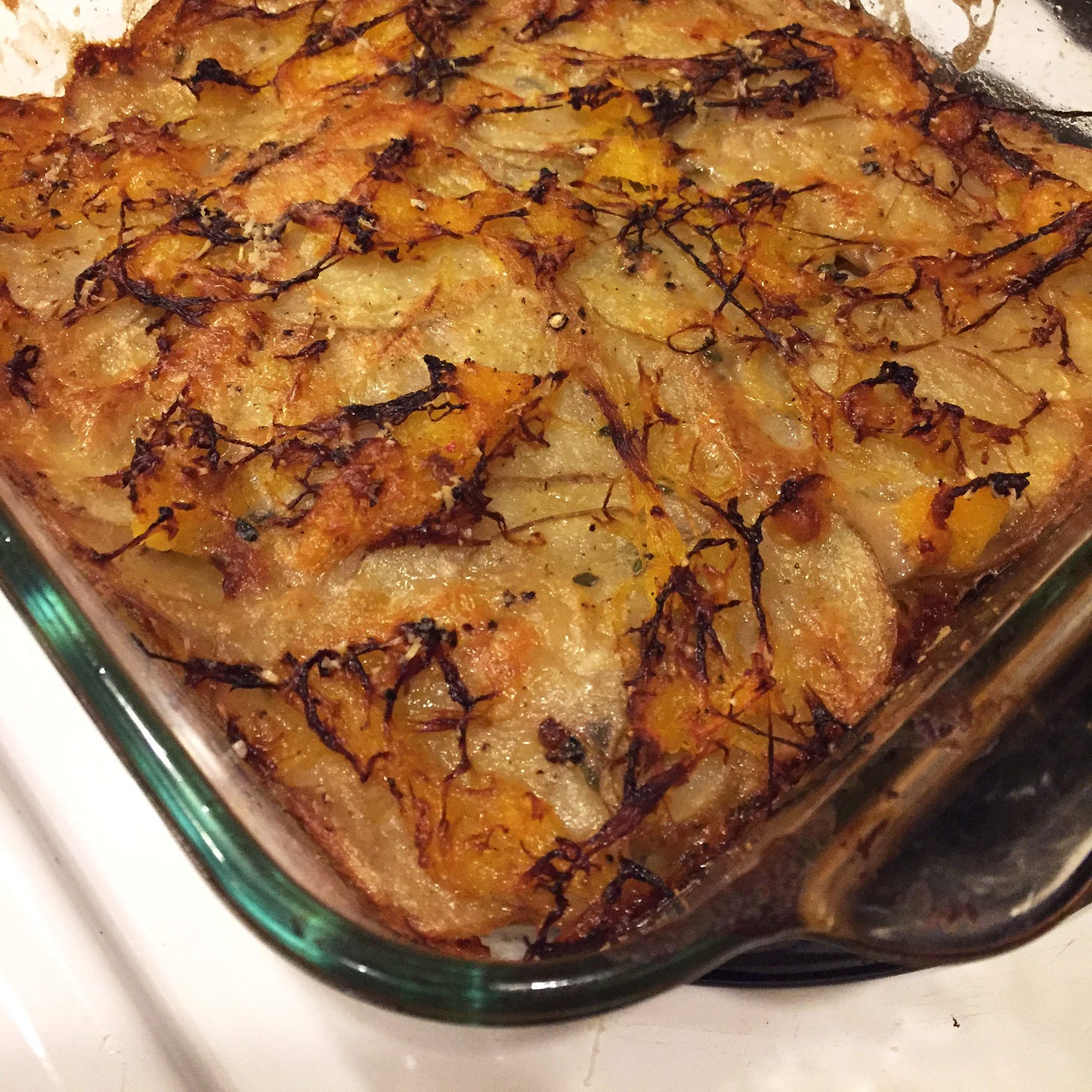As I write this, I’m getting ready to leave the Lower Mainland for the first time in over two years, to visit a friend on the Island. Much of the pandemic has been spent simultaneously longing for bits of my old life while accepting that I wouldn’t be able to fully enjoy any of them in the same way. I went 18 months without eating inside a restaurant, something I would do almost weekly. I went 19 months without taking public transit, something I would do almost daily. I deeply missed my Friday tradition of a happy hour beer with my book at the brewery on the way home from work. And every time Jeff and I considered a little road trip, even just a weekend trip elsewhere in the province, and started making plans for one, things got bad again and we either decided it wasn’t a good idea or travel was restricted.
Now, it really feels like there won’t be a particular point when we can say this is “over”, which is obviously depressing to think about. I know that what I miss about the time before is less the activities themselves (although I do genuinely miss them), but more the ability to do practically anything with a level of carelessness and spontaneity that is impossible now. As someone who is low-risk for serious illness and is very cautious about the amount of time I spend unmasked around others (particularly those who are high-risk), I’m hoping I’ll be able to relax into some of the things I used to enjoy doing, even if it does happen slowly. But I guess I’ll see how many unmasked people there are walking around the ferry.
Anyway, I’ve been off work this week, and it’s felt a little like a throwback to 2020 when I was without a job for months and spent most of my days on household tasks, gardening, playing video games, and making food (I’ve simply replaced video games with knitting, this time around). I thrived in unemployment and was never bored, even if I didn’t leave the house for days at a time; I always had projects on the go. Which is to say we’ve been eating well. If only I could somehow make a living by staying home and making beautiful food… but I’m too old to be a TikTok influencer and too rude to be a personal chef, so I hope you all enjoy.
I casually mentioned pierogi in last week’s newsletter and ever since then I couldn’t stop thinking about them. Did you know that you can make pierogis using dumpling wrappers, and it’s not even illegal? The dough texture is slightly different, but overall they create something really similar with a lot less effort than rolling out dough from scratch. I steamed some kale leaves on top of the pot in the last minute of boiling the potatoes— another good winter vegetable to add colour and texture to the filling, along with some buttery fried onions and cheese. I used cheddar, but ricotta or feta would be good here too.
You can just boil them, but I usually prefer to blanch and then pan-fry so they get crispy on one side (this is also how I do pre-made frozen pierogis). And for a less-dishes option when I made a fresh batch for lunch with the leftovers, I cooked them just like dumplings: adding water to the pan and putting the lid on to steam after briefly frying to brown the undersides. They were delicious with just sour cream and sauerkraut on the side, but some bacon (or coconut bacon) would have been nice, too. And of course, there’s always the option of just adding some milk and butter to the filling leftovers for a perfectly tasty mash.
I always enjoy cauliflower tacos when I make them, but in a way that’s not really very memorable, so I looked around for some different flavour inspiration. I came across this recipe from Minimalist Baker, featuring a smoky roasted cauliflower with a romesco sauce that uses chipotles in adobo. It reminded me a little of the romesco vegetable sandwich in Isa Does It, from which I have used the romesco part of the recipe many times. I pulled elements from both to make something I knew I’d like: the smaller amount of almonds for a thinner sauce, a couple of roasted red peppers plus about half a tomato cooked in the pan after toasting the almonds, lots of smoked paprika. Two small chipotles added extra smoky flavour and a little heat.
I roasted the cauliflower using the spice blend in the recipe, but at 450° instead of 400° for even more crispiness (just had to make sure the pieces weren’t too small, in order to not end up with charcoal). For toppings, we had a red cabbage slaw with lime and cilantro, pickled red onion, and a crema-ish sauce made with sour cream, yogurt, lime, and feta. These were so good— smoky, tangy, and just the right amount of spicy. And there’s even some romesco left over for my next sandwich or grain bowl, or possibly a pizza sauce.
Continuing to believe that smoked paprika is the answer to most of life’s questions, I also made an actually great eggplant sandwich. With globe eggplant (as opposed to the longer Asian type), salting and draining for 15-20 minutes helps to soften it and remove some of the bitterness, so I did that while creating a delicious basil aïoli. My produce bin insists on sending me these tubes of basil paste in the winter, which are mostly useless except for adding to pasta sauces and for this exact purpose, but tossing a spoonful of pesto into some mayo would produce much the same result. To roast the eggplant slices, I tossed them with a good amount of smoked paprika plus a little coriander and hot chili powder mixed into some olive oil. 425° is a good temperature to make sure it comes out crispy brown outside and soft inside without being soggy.
The eggplant was excellent on homemade sourdough with hummus, the basil mayo, some lettuce and tomato, and pickled cabbage. On the side, I tried smashed potatoes using roughly the method outlined here. These are combo pack roast and mashed potato, created by boiling skin-on small potatoes whole and then mashing each one into a flattish disc before baking to get a nice crispy outside. Although it’s somewhat time-intensive, it’s actually fairly low-effort as well as being pretty fun! And most importantly, it creates a wonderful texture, especially if the masher you use is the flat kind with holes instead of the squiggly type (but it’s still fine to use the bottom of a glass or jar or a metal spatula if you don’t have a masher). These were delicious dipped into what was left of the basil mayo.
More eggplant? More eggplant! I finally made Eric Kim’s gochujang-glazed eggplant and it deserves every rave review it’s gotten— it was stupendous. The eggplant texture comes out lovely, but the glaze! It is so perfectly spicy-sweet, I was mopping it up from my plate with my finger at the end of the meal. The dish is a tiny bit fussy due to frying the green onions to make them crisp, but you could probably skip that step and just sprinkle with sesame seeds and it would still be great, and I’m sure the glaze would be good on cauliflower, tofu, or squash as well. We served it with local fingerling potatoes roasted in miso butter which was an excellent partner thanks to their buttery texture, but plain rice would let the sauce really shine.

Also this week I made the delightful rosemary chocolate chip cookies again (details here), and revisited this spaghetti squash and potato gratin. This time I used coconut milk (I’ve previously made it with heavy cream or with oat milk) and the results were so fabulous, I think I’ll always make it this way from now on. It’s basically the only worthwhile way to eat spaghetti squash, though I now believe my smoky squash vegan mac might also be a good use for it!
Media:
In a week where I spent a lot of time cooking and feeling happy to do so, I enjoyed this thoughtful piece for the times when that has not been the case: Chantal Braganza on recent cookbooks that made her want to cook again. I have levels of privilege that allow me to write this newsletter: access to ingredients, an able body, time to cook and write, no dependents to care for, and a reasonably consistent ability to derive joy from making food. If any one of these things fails to be true, things can look a lot different for me (or for anyone). There will always be periods when simply making food for yourself or your family feels like an insurmountable task, and during those times it can feel defeating to be fed the instagram-ready, multi-component meals of influencers and popular cookbooks.
“I don’t think it’s a coincidence these books are arriving in the third year of a pandemic that has radically changed the way we think about how we feed ourselves, and, crucially, how we talk about it, and who gets to.”
The cookbooks discussed in the article all approach cooking with a compassion for anyone who’s struggling, and in a way that eschews the traditional culture of cookbook creation, knowing that someone who, for instance, is just trying to get their kids fed during a time of high stress likely doesn’t have much use for a section entitled “appetizers”. It can be refreshing to focus on accepting that your approach in the kitchen may not always look the same, and what you can do to take care of yourself without pushing too hard.
Thanks for reading— if you enjoyed this newsletter, please share it with someone new! I like providing this to you for free, but it does still involve time and effort, so donations I can use towards cookbooks or future treats are much appreciated. Anyway, please enjoy this nightmare fuel that I had to see and now so do you.






